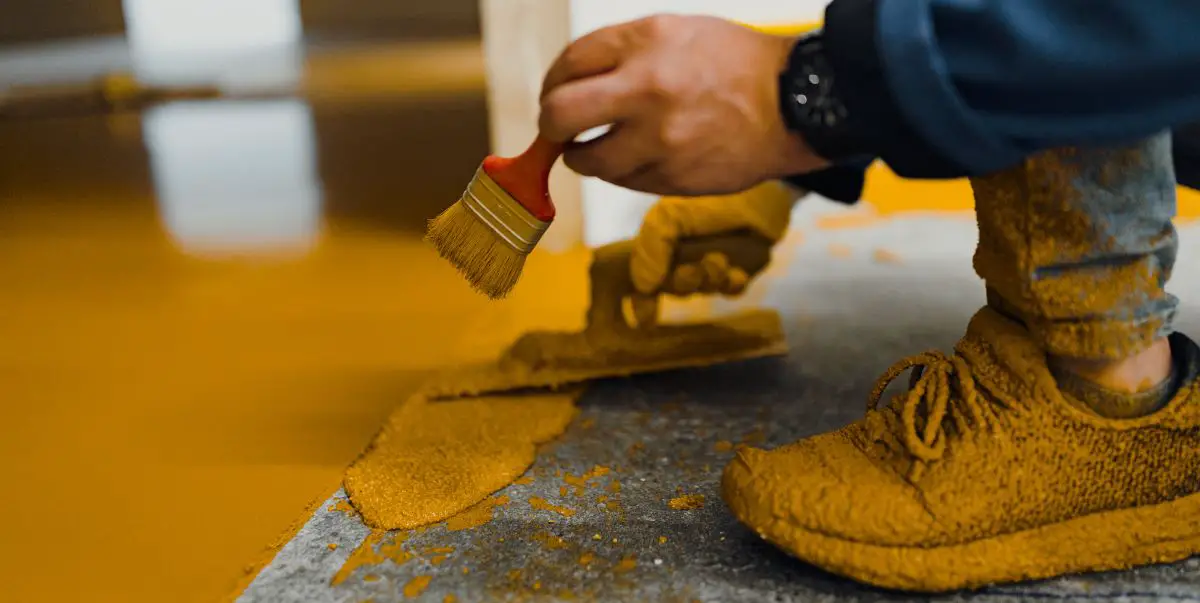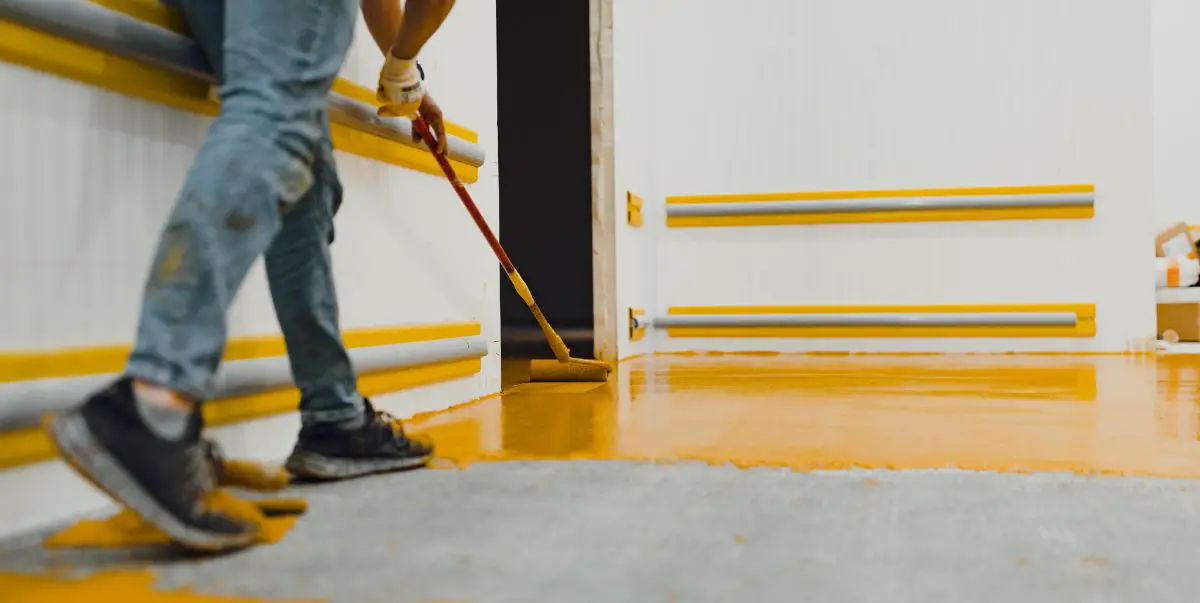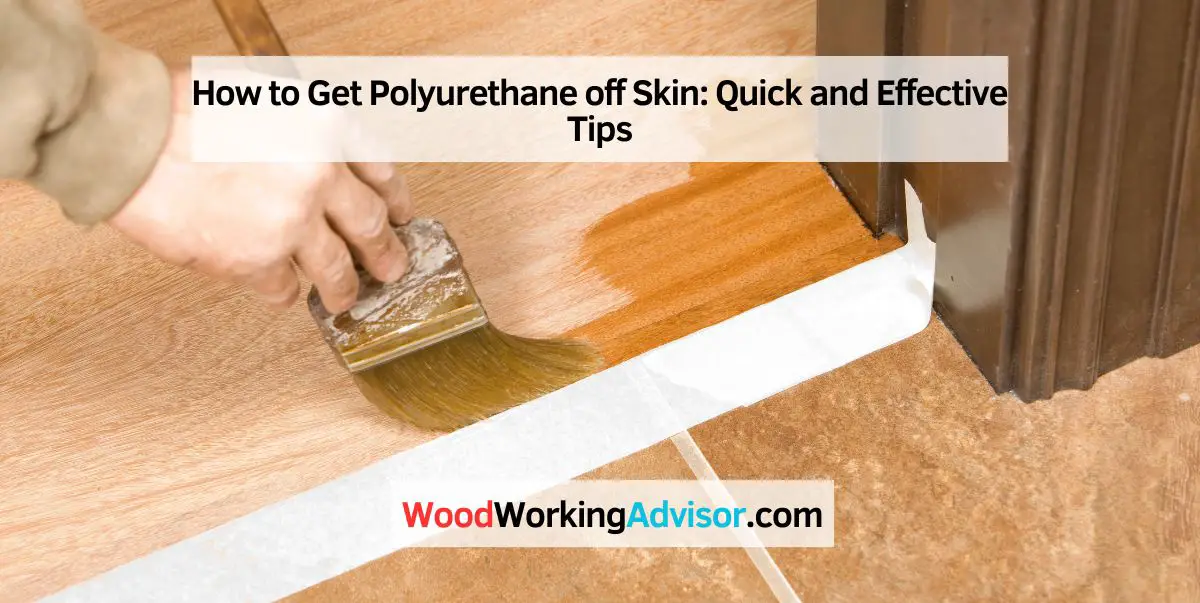To remove polyurethane from skin, use soap and warm water to wash the affected area.
Identifying Polyurethane On Skin
Polyurethane on the skin can be tricky to remove, but there are effective methods to tackle this issue. You can use soap and water to gently wash the affected area, apply oil or petroleum jelly to help break down the polyurethane, and then carefully peel it off the skin.
Recognizing The Presence
The first step in removing polyurethane off your skin is to identify its presence. Polyurethane is a common substance found in various products, such as adhesives, sealants, foams, and coatings. It forms a clear, tough, and flexible film when it dries, making it an excellent protective layer. However, accidents can happen, and you might end up with unwanted polyurethane on your skin.
Polyurethane can come in different forms, such as liquid, spray, or even as a residue left behind after using certain products. It may feel sticky, and upon drying, it hardens and becomes more challenging to remove. Often, you may spot polyurethane on your skin after working on a DIY project, painting, or handling items with polyurethane coatings.
Potential Risks
While polyurethane is generally safe, it’s essential to take caution when it comes into contact with your skin. Since it forms a strong bond when fully cured, removing it can be a tricky process. Trying to scrape or peel it off forcefully can damage your skin, causing irritation, redness, or even injury. Additionally, the chemicals present in polyurethane may have harmful effects if they penetrate your skin.
It’s worth noting that some individuals may be more sensitive to polyurethane than others. If you have a history of skin allergies or sensitivities, it’s best to proceed with extra care and seek medical advice if necessary. Moreover, some polyurethane products may contain additives or solvents that can cause further irritation or allergic reactions. However, these risks can be mitigated by promptly and safely removing polyurethane from your skin.
Precautions And Initial Steps
Removing polyurethane from your skin can be a tricky task, but with proper precautions and initial steps, it can be done effectively. Follow our step-by-step guide to safely get rid of polyurethane without causing further harm to your skin.
Avoiding Contact
When working with polyurethane, it is crucial to take precautions and avoid direct contact with your skin. Here are a few steps to keep yourself safe:
- Wear protective gloves and clothing to prevent any direct skin exposure.
- Ensure proper ventilation in the area where you are working to minimize the risk of inhaling polyurethane fumes.
- Avoid touching your face or any other part of your body while handling polyurethane.
- Keep children and pets away from the work area to prevent accidental contact.
Immediate Actions
In case you accidentally get polyurethane on your skin, it is essential to take immediate action to minimize any potential harm. Here are some initial steps you can follow:
- Remove any contaminated clothing or accessories from the affected area.
- Rinse the affected area thoroughly with soap and water for at least 15 minutes.
- Gently scrub the skin using a mild soap or detergent to ensure complete removal of polyurethane.
- Do not use abrasive substances or scrub too vigorously, as this may further irritate the skin.
- If the polyurethane has hardened or is difficult to remove, soak the affected area in warm, soapy water to soften it before gently scrubbing.
Note: If the irritation persists or you have any concerns, seek medical attention immediately.

Using Common Household Items
If you’ve accidentally gotten polyurethane on your skin, don’t worry – there are common household items that can help remove it effectively. These items are easily accessible and can be found in your kitchen or bathroom. Here are simple methods that you can use to get polyurethane off your skin using common household items:
Vegetable Oil
Vegetable oil can be a handy solution for removing polyurethane from your skin. Here’s how to use it:
- Apply a generous amount of vegetable oil to the affected skin area.
- Gently massage the oil into the skin for a few minutes.
- Wipe off the polyurethane and oil using a clean cloth or tissue.
- Wash the area with mild soap and water to remove the remaining oil.
Soap And Water
Using soap and water is a simple yet effective method for removing polyurethane from your skin:
- Rinse the affected skin with warm water.
- Apply a small amount of mild soap directly onto the affected area.
- Gently scrub the skin with the soap, focusing on the polyurethane-affected areas.
- Rinse the skin thoroughly with water and pat dry with a towel.
Specialized Solutions For Polyurethane Removal
Polyurethane can be quite stubborn to remove from the skin, but fear not! There are specialized solutions that can effectively tackle the task. Acetone and mineral spirits are two such solutions that are commonly used for polyurethane removal. Let’s delve into their properties and how to use them:
Acetone
Acetone is a powerful solvent that is widely known for its effectiveness in removing various types of adhesives and coatings. When it comes to polyurethane removal, acetone can work wonders.
How to use acetone for polyurethane removal:
- Start by washing the affected area with mild soap and warm water. Pat it dry gently.
- Take a cotton ball or soft cloth and dampen it with a small amount of acetone.
- Gently rub the polyurethane-covered skin with the acetone-soaked cloth, applying slight pressure.
- Continue rubbing until the polyurethane starts to dissolve and lift off the skin.
- Once the bulk of the polyurethane has been removed, cleanse the area again with soap and water to get rid of any residual acetone.
- Apply a moisturizer or soothing cream to hydrate the skin afterwards.
Mineral Spirits
Mineral spirits, also known as white spirit or paint thinner, can also be effective in removing polyurethane from the skin. It is less harsh than acetone, making it a suitable alternative for individuals with sensitive skin.
How to use mineral spirits for polyurethane removal:
- Cleanse the affected area with mild soap and warm water, then pat it dry.
- Gently moisten a clean cloth or cotton ball with a small amount of mineral spirits.
- Apply the damp cloth to the polyurethane-covered skin and gently rub in a circular motion.
- Continue rubbing until the polyurethane starts to dissolve and lift off the skin.
- Once the polyurethane has been removed, wash the area again to eliminate any traces of mineral spirits.
- Follow up with a moisturizer or soothing cream to nourish the skin.
Remember, it’s important to exercise caution when using acetone or mineral spirits for polyurethane removal. These solutions should be used in well-ventilated areas, and patch testing on a small area of the skin is recommended to check for any adverse reactions. If you have any concerns or experience prolonged irritation, consult a medical professional.
Post-removal Skin Care
After successfully removing polyurethane from your skin, it is important to give your skin the care it needs to recover and heal. Post-removal skin care plays a vital role in restoring the skin’s natural moisture balance and preventing further irritation or damage. In this section, we will explore two essential aspects of post-removal skin care: moisturizing and sensitive skin considerations.
Moisturizing
A key step in the post-removal skin care routine is moisturizing. Polyurethane removal often strips the skin of its natural oils, leaving it feeling dry and irritated. To replenish the moisture and promote healing, it is crucial to use a gentle and hydrating moisturizer.
Here are some tips to effectively moisturize your skin after removing polyurethane:
- Choose a moisturizer specifically formulated for sensitive skin. Look for ingredients like hyaluronic acid, ceramides, and glycerin, which effectively lock in moisture without causing further irritation.
- Apply the moisturizer immediately after removing the polyurethane. This helps to seal in the moisture and relieve any discomfort or tightness in the skin.
- Gently massage the moisturizer into your skin using upward circular motions. Avoid rubbing or stretching the skin.
- Reapply the moisturizer throughout the day as needed, particularly if you notice any dry patches or tightness.
Sensitive Skin Considerations
For individuals with sensitive skin, post-removal skin care requires extra attention and caution. Here are some considerations to keep in mind:
- Choose a fragrance-free and hypoallergenic moisturizer that is free from potential irritants. This helps to minimize the risk of any adverse reactions or allergies.
- Avoid any harsh or abrasive exfoliants or cleansers during the post-removal skin care routine. Opt for gentle, non-comedogenic products that cater to sensitive skin.
- Keep the skin hydrated by drinking plenty of water throughout the day. Hydration from within plays a significant role in maintaining the skin’s health and resilience.
- Protect your skin from sun exposure by wearing a broad-spectrum sunscreen with SPF 30 or higher. This helps to prevent further damage and maintain the integrity of the skin.

Frequently Asked Questions For How To Get Polyurethane Off Skin
How Do You Get Polyurethane Adhesive Off Your Skin?
To remove polyurethane adhesive from your skin:
1. Gently wash the affected area with soap and warm water.
2. Use a scrub or exfoliating towel to rub the adhesive off.
3. Apply an oil-based substance like baby oil or coconut oil to further loosen the adhesive.
4. Continue rubbing until the adhesive comes off.
5. Rinse with water and pat dry.
How Do You Remove Pu Sealant From Hands?
To remove PU sealant from hands, use a combination of soap, warm water, and a scrubbing brush to gently scrub the affected area. You can also apply a solvent, such as acetone or nail polish remover, to help break down the sealant.
Always moisturize your hands afterwards.
What Removes Dried Polyurethane?
To remove dried polyurethane, you can use mineral spirits, denatured alcohol, or a polyurethane stripper. Apply the chosen solution to the dried polyurethane, let it sit for a few minutes, then scrape it off with a putty knife. Always follow safety precautions and test in a small area first.
Does Alcohol Remove Polyurethane?
Alcohol can remove polyurethane due to its solvent properties. It acts as a stripping agent, breaking down the polyurethane coating. However, it is recommended to use a mild alcohol solution and test it on a small, inconspicuous area before applying it to the entire surface.
Conclusion
In the end, it’s important to remember that accidents happen, and polyurethane can be tricky to remove from the skin. By following the steps outlined in this guide, you can effectively and safely remove polyurethane from your skin. Always prioritize your safety and seek medical attention if necessary.
With the right knowledge and tools, dealing with polyurethane spills doesn’t have to be a hassle.


